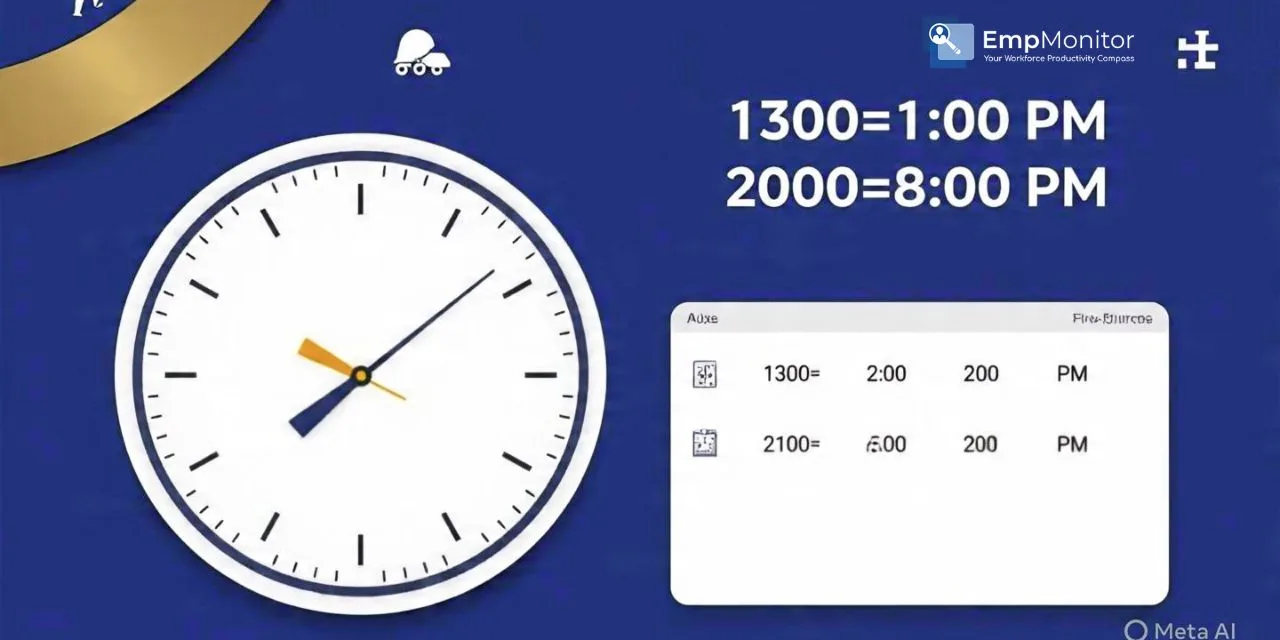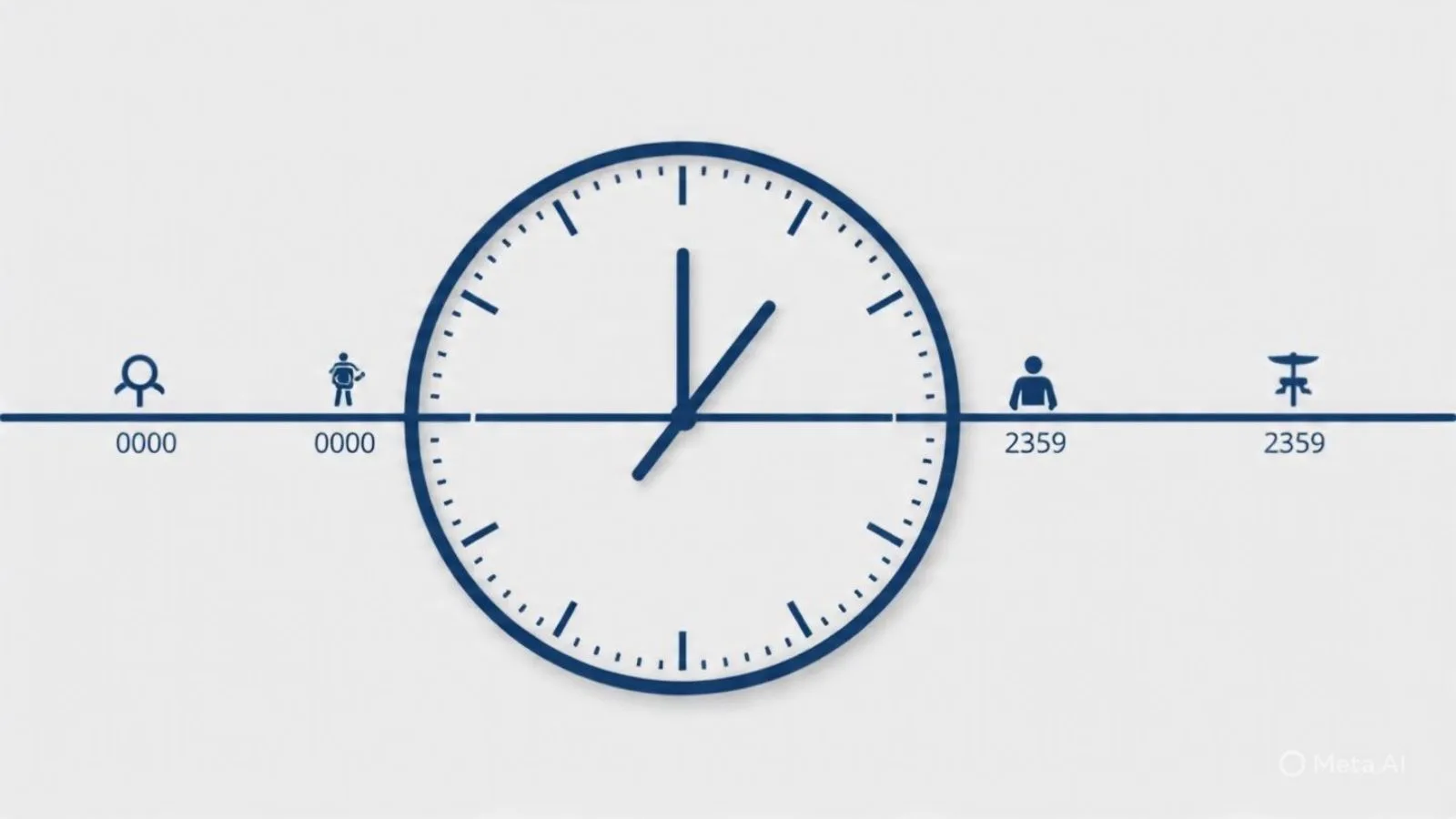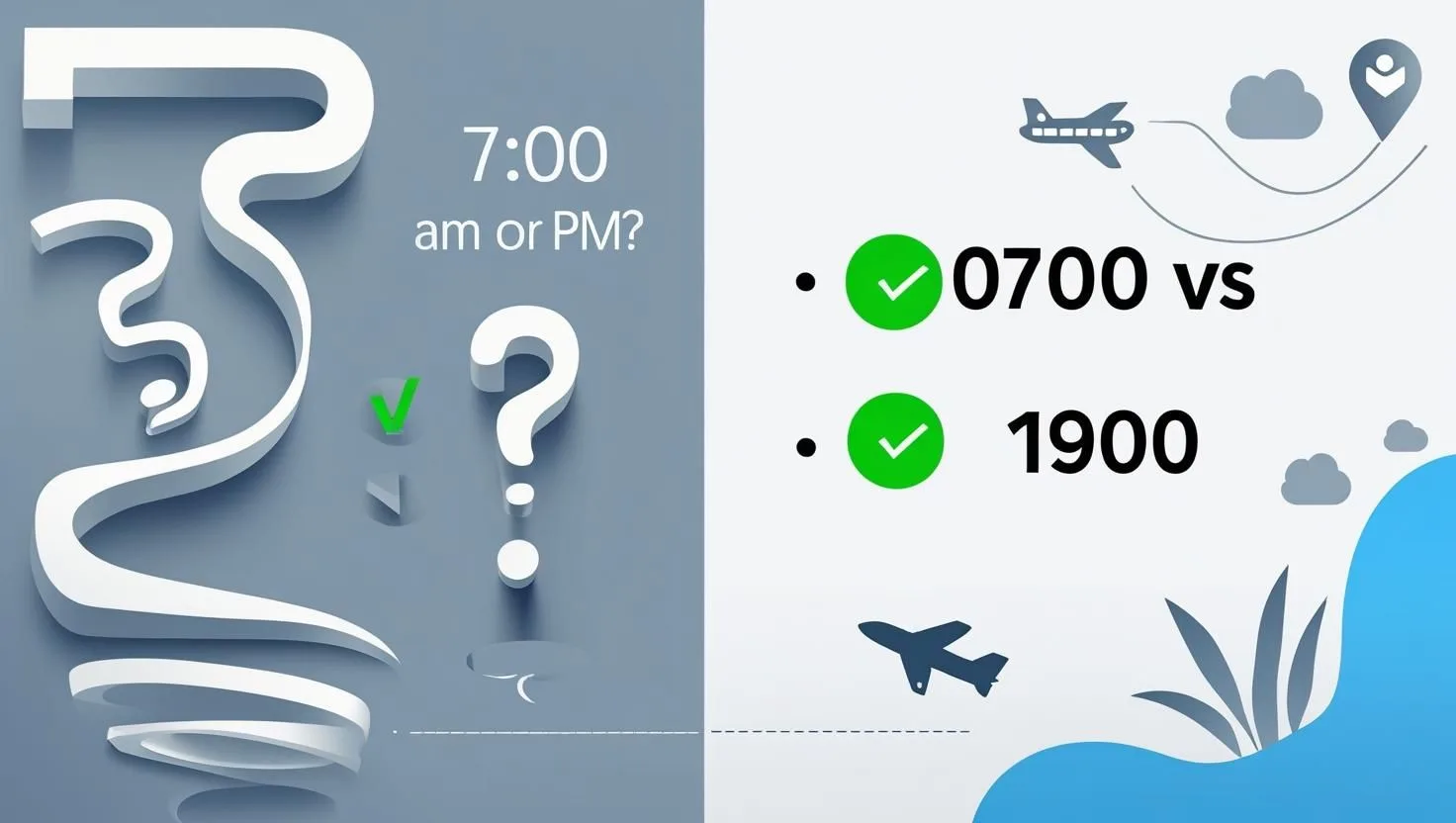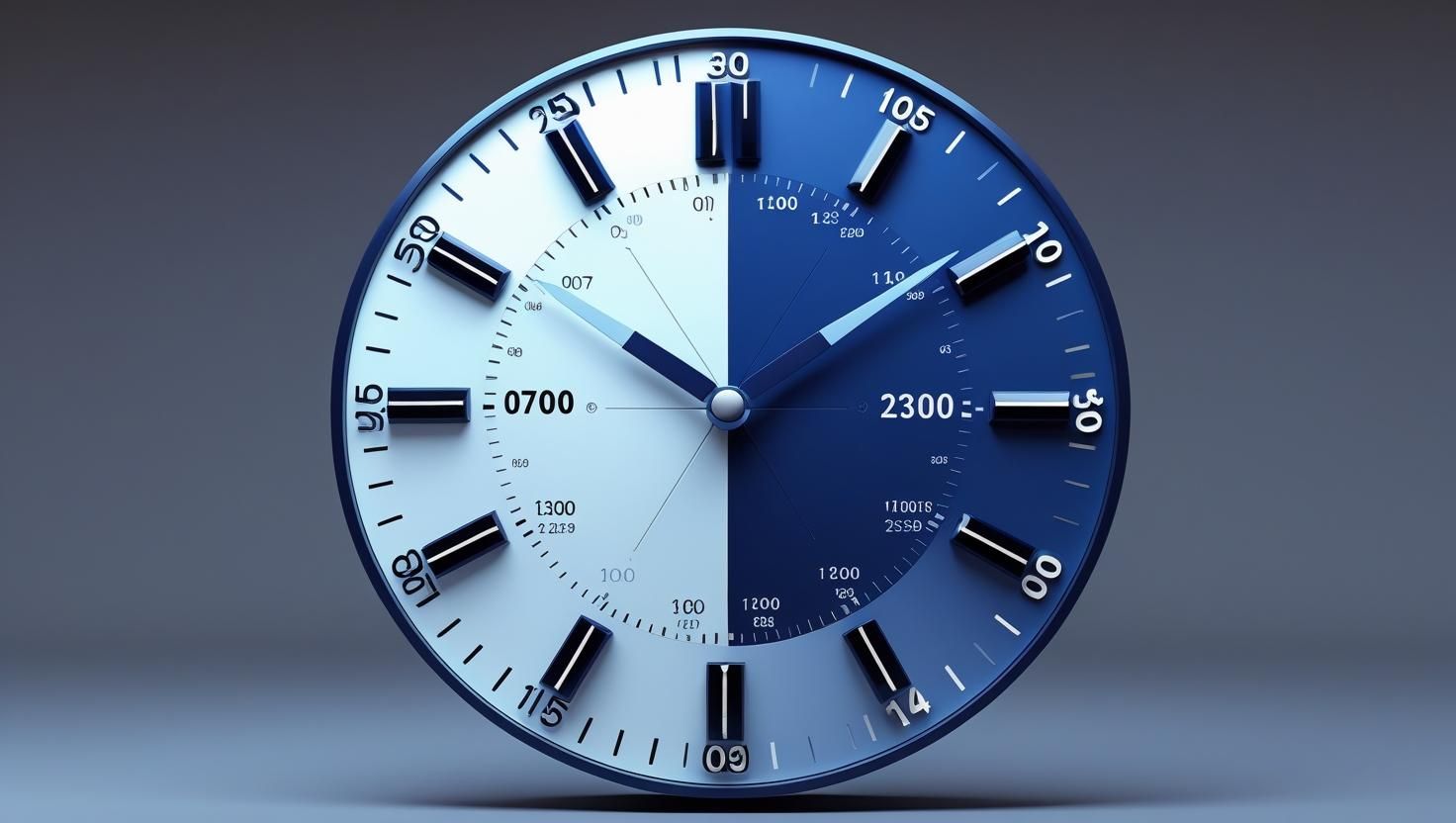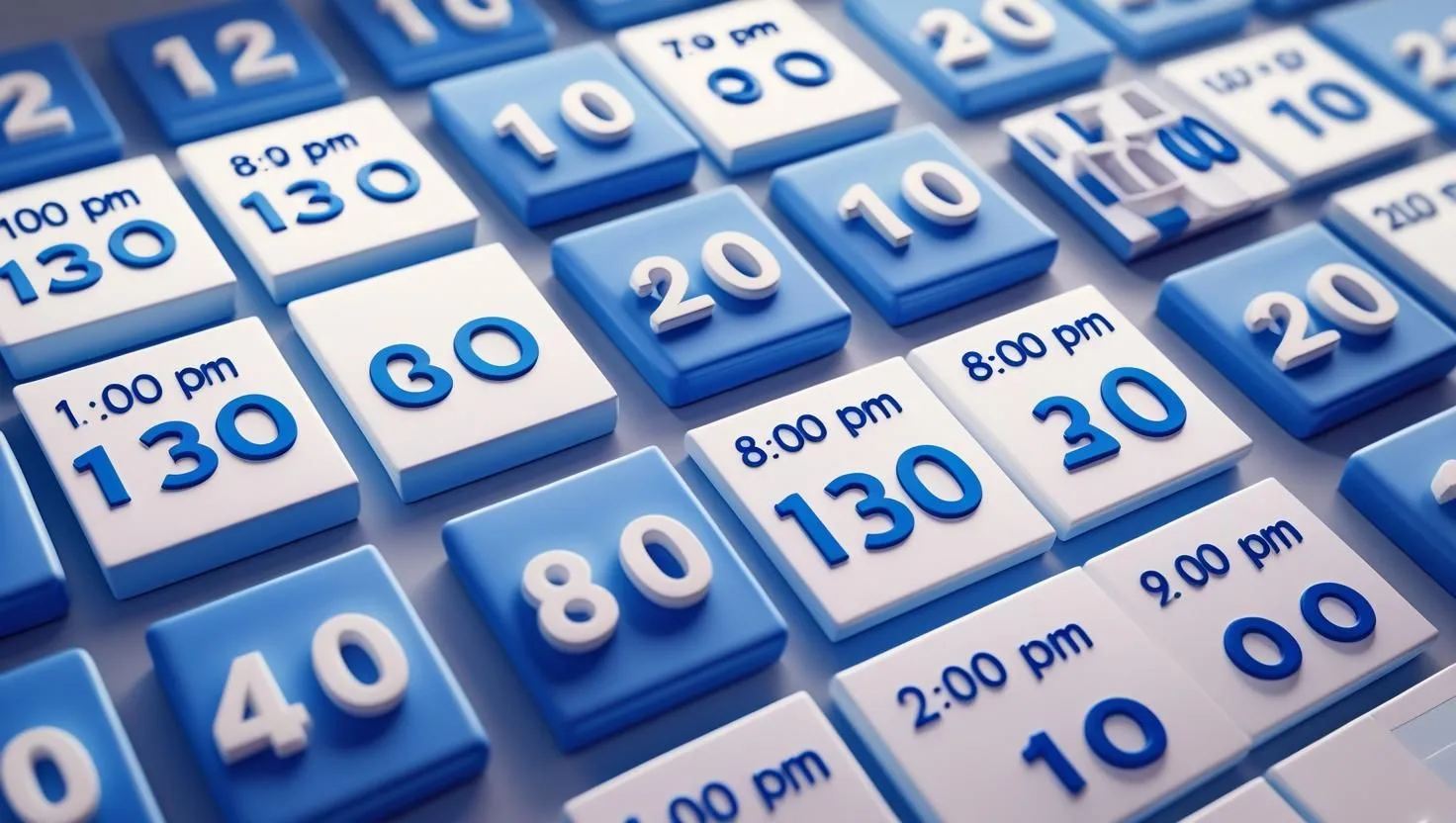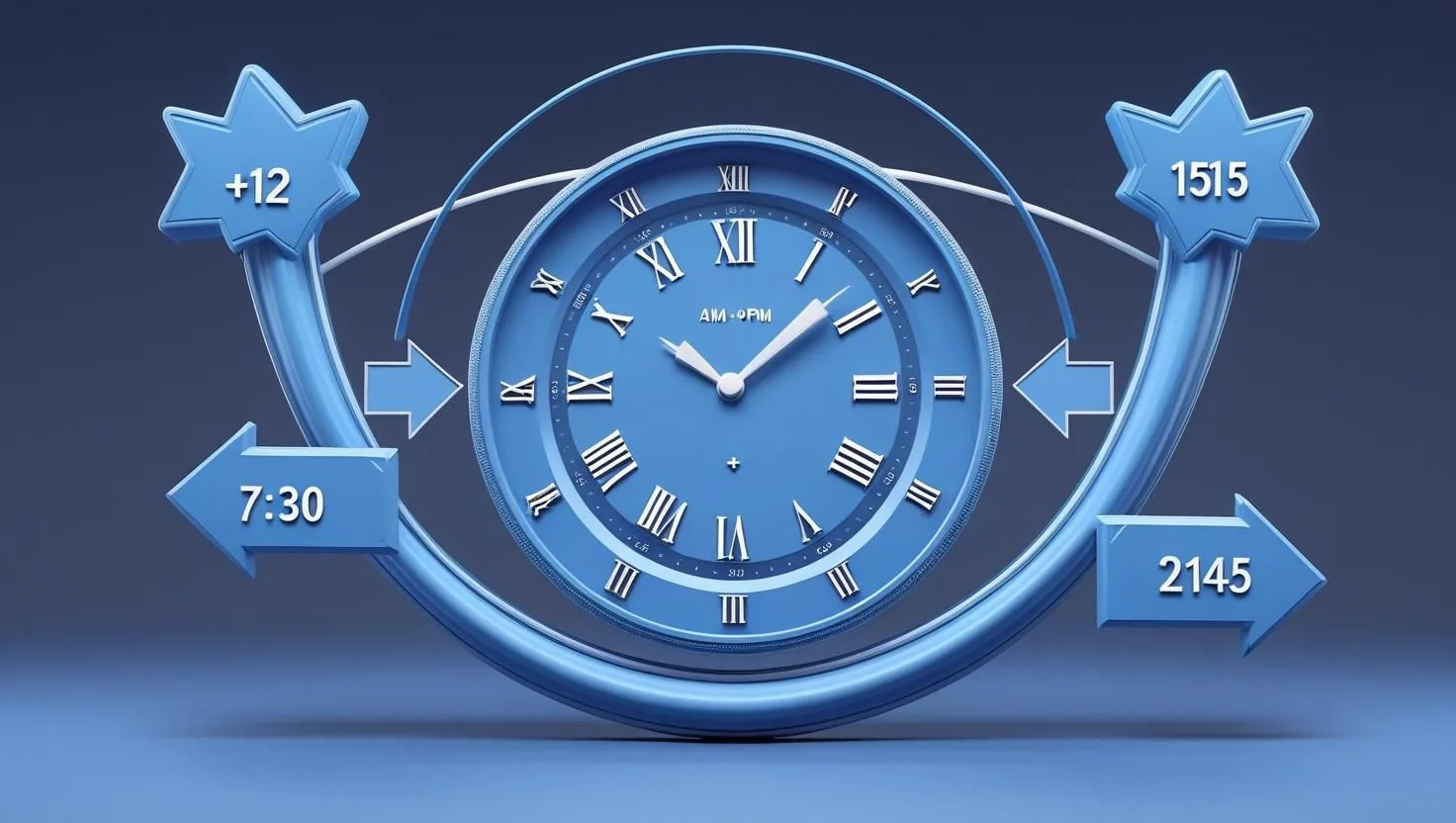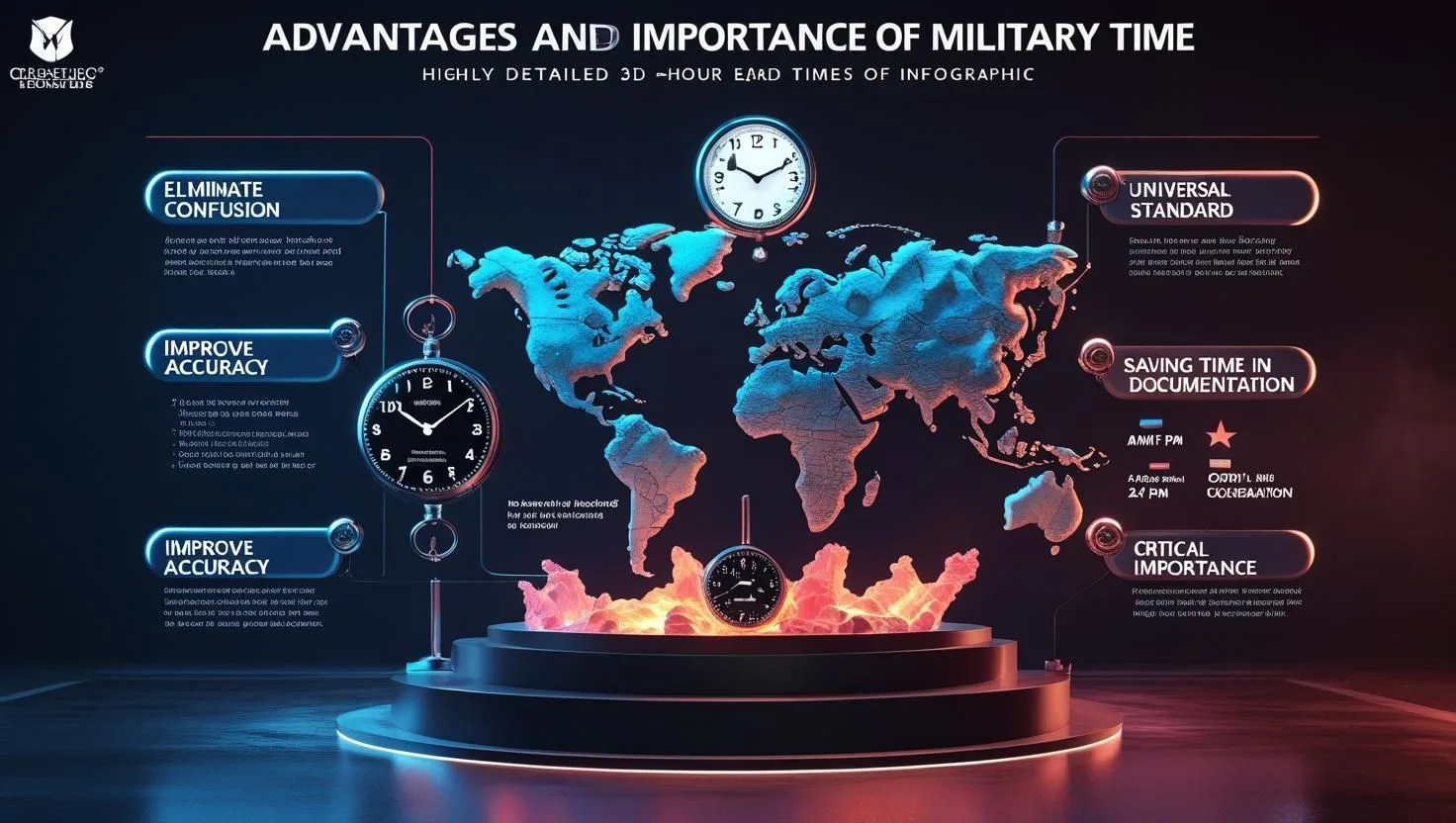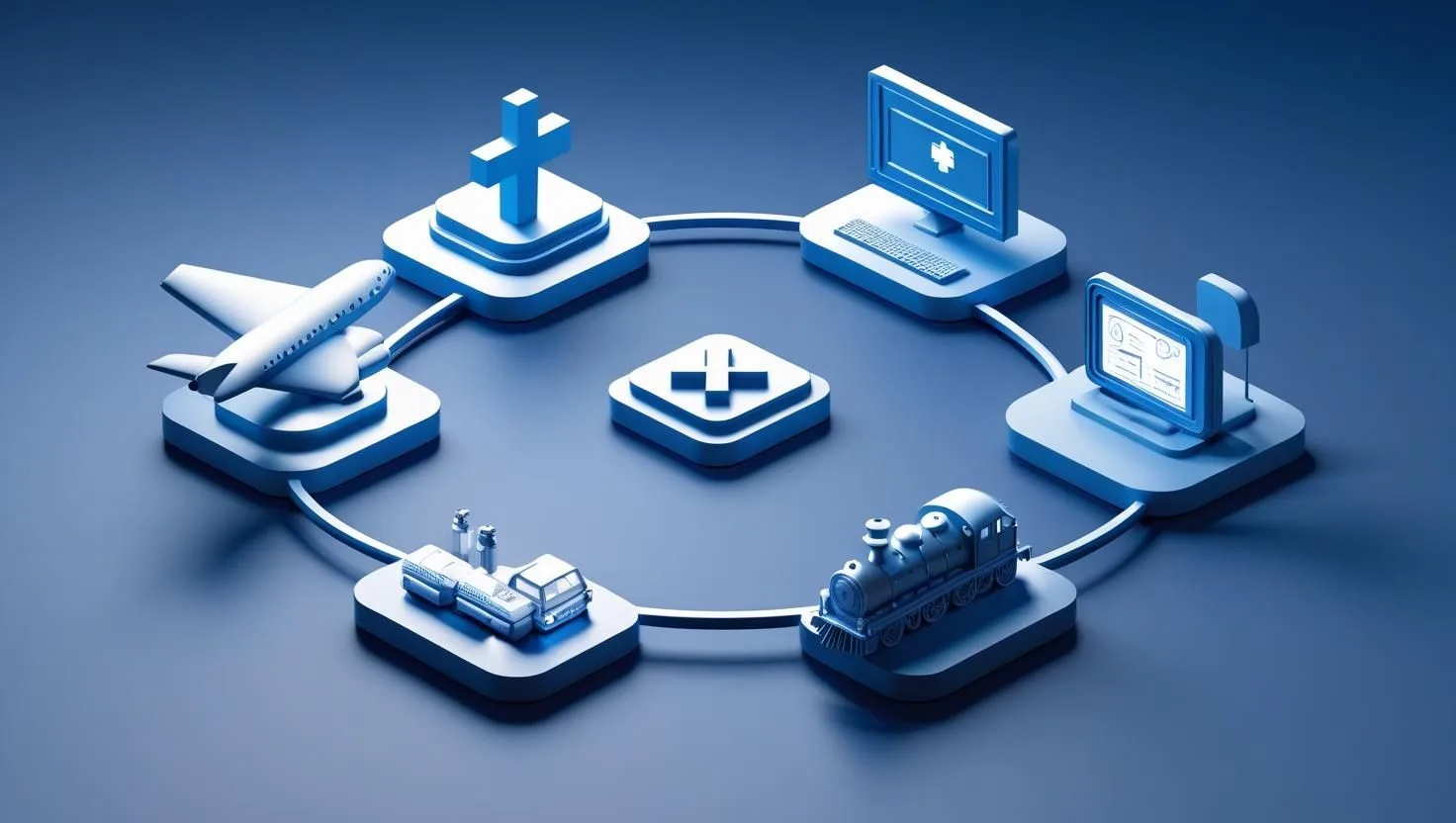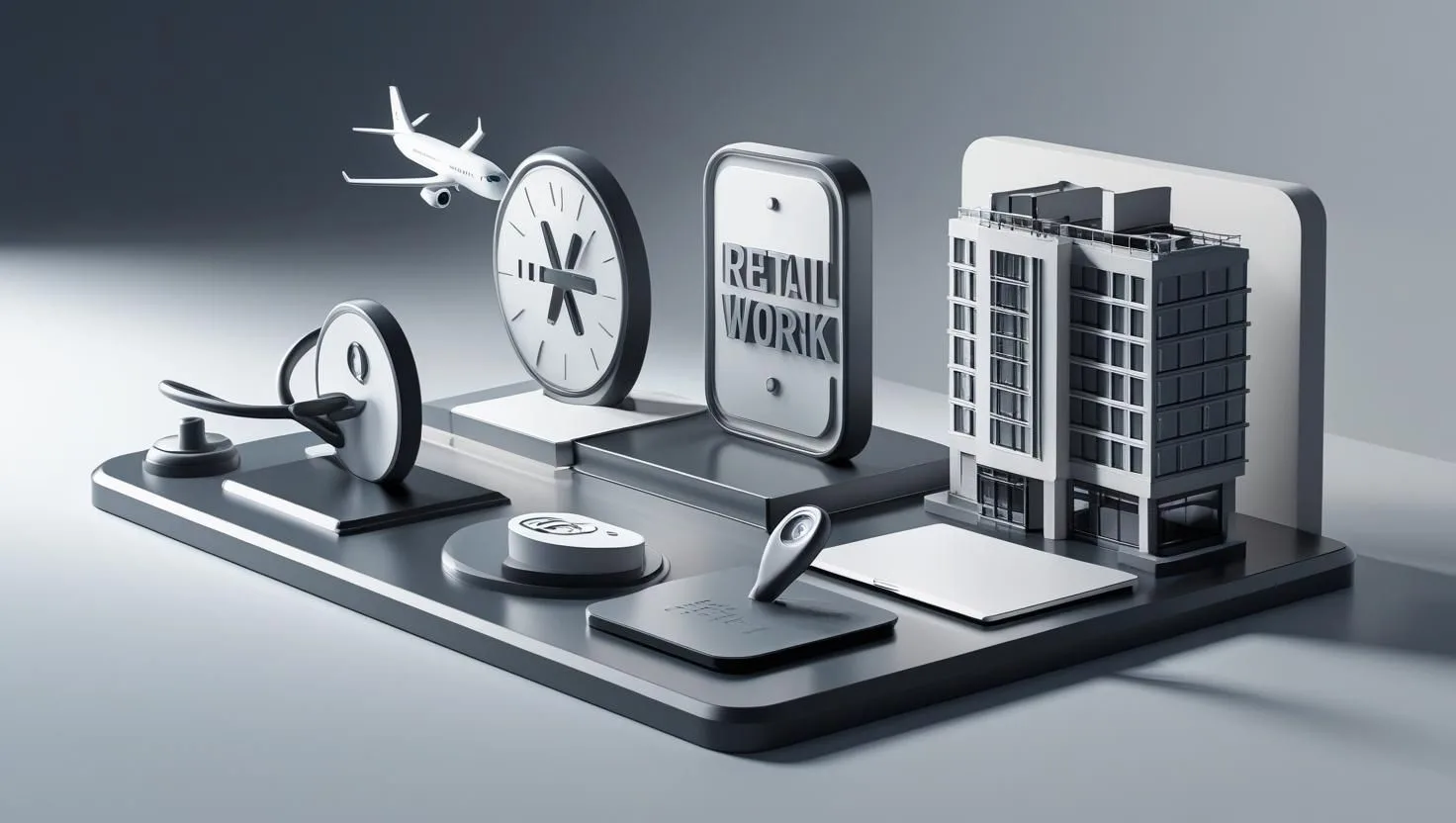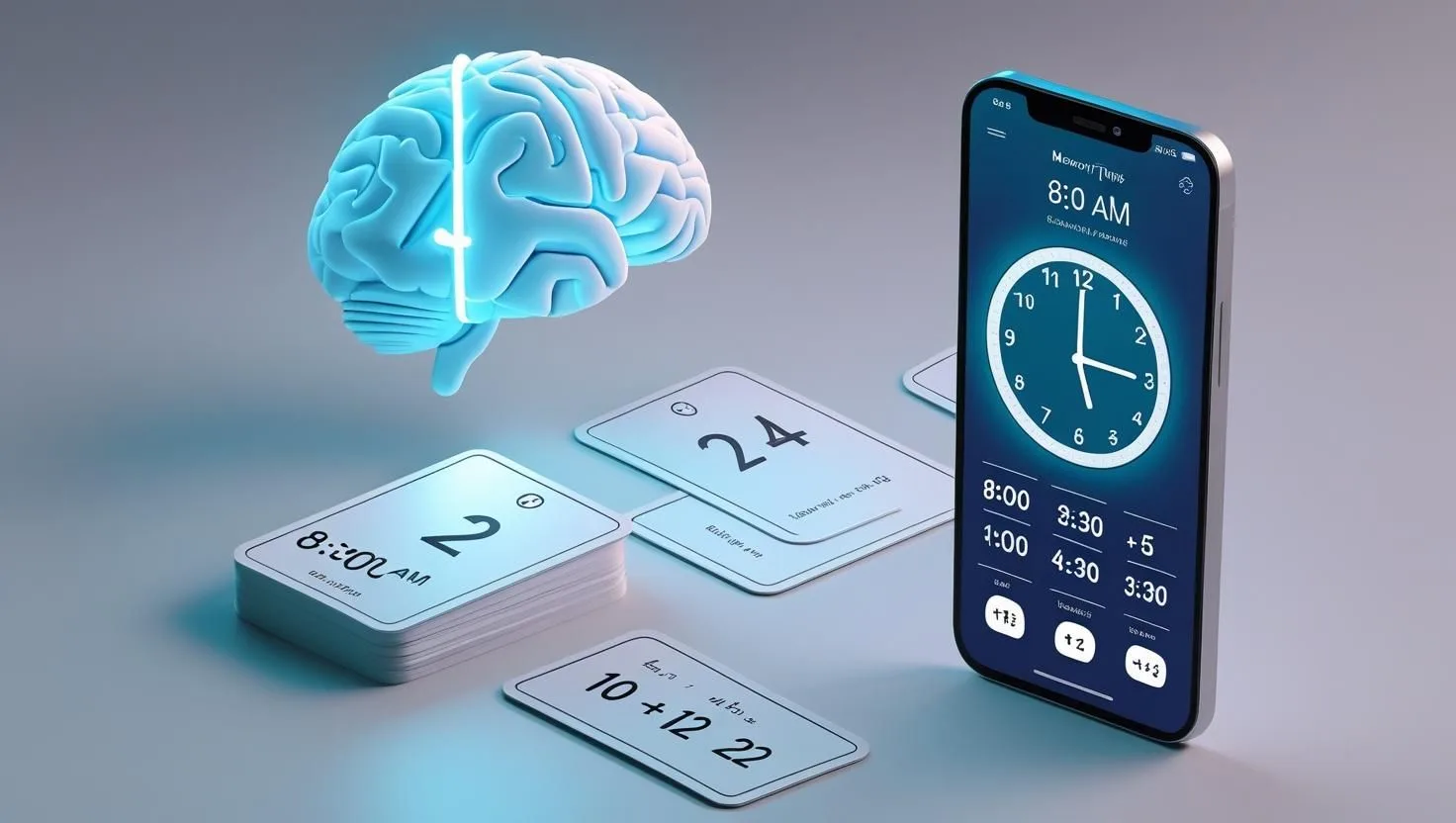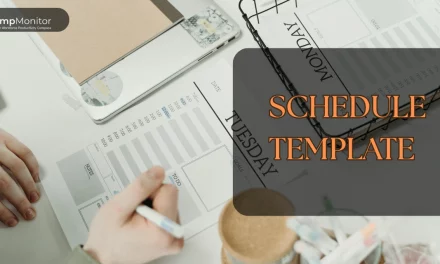Time formats can sometimes be confusing, especially when you come across military time. Unlike the standard 12-hour clock system with AM and PM, time follows a 24-hour format that eliminates confusion about morning and evening hours. For example, instead of writing 9:00 PM, army time represents it as 2100.
This format is common in the military, aviation, healthcare, transportation, and other fields where accuracy and clear communication are very important. Learning time not only helps in understanding schedules but also improves time management in daily life.
In this blog, we’ll break down time conversion in a simple way, give you an easy-to-follow chart, and share examples like 1300 time, 2000 time, 2100 time, and more. By the end, you’ll be able to quickly convert time to regular time without any confusion.
You can Also Listen to our Podcast here,
What is Military Time? 
Military time is a 24-hour clock system that runs from 0000 hours (midnight) to 2359 hours (11:59 PM). Unlike the regular 12-hour format that resets at noon and midnight, the 24-hour clock continues in sequence throughout the day.
For example:
- 0100 24 hour clock = 1:00 AM
- 1200 24-hour clock = 12:00 PM (noon)
- 1300 24 hour clock = 1:00 PM
- 2200 24 hour clock = 10:00 PM
The reason it’s called “24-hour clock” is that the military relies heavily on precise timing. A mistake between AM and PM could cause serious issues in operations, flights, or medical emergencies. That’s why this format leaves no room for confusion.
Many professions outside the military, such as aviation, hospitals, emergency services, and logistics, also use 24-hour clock conversion to stay accurate and avoid scheduling errors.
Why Use Military Time?
Military time might look a little unusual at first, but it’s actually a lot more practical than the regular 12-hour clock. The main reason is clarity. With standard time, you always have to specify AM or PM. Forgetting that detail could lead to serious confusion.
For example:
- A meeting set at 7:00 could mean 7:00 AM or 7:00 PM in regular time.
- In the 24-hour clock, it’s either 0700 (morning) or 1900 (evening), no mistakes.
Here are a few more reasons why people prefer this format:
- No AM/PM confusion: Perfect for critical jobs like hospitals, airlines, or emergency services.
- Global standard: Many countries and industries already use the 24-hour format, making it easier to communicate internationally.
- Professional accuracy: Professions that depend on schedules (transport, military, healthcare) rely on precise time to prevent errors.
- Easy for long shifts: In jobs where people work late hours or overnight, 24-hour clock conversion makes it simple to track time without mix-ups.
Think of it this way: 2100 military time will always mean 9:00 PM, no matter where you are. That kind of accuracy is why more workplaces and tools are adopting it today.
How Military Time Works?
The 24-hour clock system uses the 24-hour clock system, which starts at 0000 (midnight) and runs all the way to 2359 (11:59 PM). After that, the cycle repeats.
Here’s how it works step by step:
- Morning Hours (0000–1159):
- Times from midnight until 11:59 AM look almost the same as standard time, just without the AM.
- Example: 0700 = 7:00 AM.
- Afternoon Hours (1200–2359):
- After 12:00 noon, the numbers keep going up instead of starting over.
- Example: 1300 = 1:00 PM, 1800 = 6:00 PM, 2300 = 11:00 PM.
- No Colons (Optional):
- In military contexts, times are often written as 1530 instead of 15:30. Both mean 3:30 PM.
- Pronunciation:
- Times are read in hundreds. For example:
- 0600 = “Zero six hundred hours”
- 1545 = “Fifteen forty-five hours
- Times are read in hundreds. For example:
This system makes it impossible to confuse morning and evening times, making it the go-to format in aviation, healthcare, the military, and even workplaces with international teams.
Military Time Conversion Chart
Here’s a simple 24-hour clock conversion chart that shows how standard 12-hour time compares to 24-hour 24-hour clock:
| Standard Time (12-hour) | Military Time (24-hour) |
| 12:00 AM (Midnight) | 0000 or 0001 |
| 1:00 AM | 0100 |
| 2:00 AM | 0200 |
| 3:00 AM | 0300 |
| 4:00 AM | 0400 |
| 5:00 AM | 0500 |
| 6:00 AM | 0600 |
| 7:00 AM | 0700 |
| 8:00 AM | 0800 |
| 9:00 AM | 0900 |
| 10:00 AM | 1000 |
| 11:00 AM | 1100 |
| 12:00 PM (Noon) | 1200 |
| 1:00 PM | 1300 |
| 2:00 PM | 1400 |
| 3:00 PM | 1500 |
| 4:00 PM | 1600 |
| 5:00 PM | 1700 |
| 6:00 PM | 1800 |
| 7:00 PM | 1900 |
| 8:00 PM | 2000 |
| 9:00 PM | 2100 |
| 10:00 PM | 2200 |
| 11:00 PM | 2300 |
How to Convert Standard Time to Military Time (Step-by-Step Examples)?
Understanding the chart is useful, but let’s go through a few real examples so you can see how the conversion works in practice:
Example 1: Morning Time
Standard Time: 7:30 AM
- The 24-hour clock for morning hours (1:00 AM – 11:59 AM) is the same as standard time, just written in four digits.
- So, 7:30 AM → 0730
Example 2: Noon
Standard Time: 12:00 PM
- Noon is simply 1200 in military time.
Example 3: Afternoon Time
Standard Time: 3:15 PM
- For times in the afternoon or evening (1:00 PM – 11:59 PM), just add 12 to the hour.
- 3:15 PM → 3 + 12 = 15 → 1515
Example 4: Evening Time
Standard Time: 9:45 PM
- Add 12 to the hour (9 + 12 = 21).
- 9:45 PM → 2145
Example 5: Midnight
Standard Time: 12:00 AM
- Midnight is written as 0000 (or sometimes 2400 to mark the end of the day).
Why Military Time is Used (Advantages and Importance)?
Military time isn’t just for the armed forces; it’s widely used in healthcare, aviation, transportation, and even global businesses. But why is it so important?
1. Eliminates Confusion
In standard 12-hour time, 8:00 AM and 8:00 PM look almost the same, which can cause mistakes. The 24-hour clock removes this problem by clearly showing 0800 vs. 2000.
2. Improves Accuracy
When operations depend on split-second timing, like in hospitals, the military, or airlines, using a 24-hour clock ensures clarity. There’s no chance of misunderstanding a schedule.
3. Universal Standard
Because military time is used everywhere, it makes international communication easier. Teams in different countries can coordinate without worrying about AM/PM differences.
4. Saves Time in Documentation
Instead of writing “AM” or “PM,” you just write four digits (e.g., 1430). This is faster and reduces errors.
5. Critical in Emergencies
In fields like healthcare, aviation, and military operations, every second matters. A 24-hour clock helps professionals avoid costly mistakes that could happen due to AM/PM mix-ups.
Why Military Time Is Still Relevant Today?
Even though most of us use the 12-hour clock in daily life, military time remains important in many industries. Here’s why it’s still widely used:
- Clarity in Communication – 24-hour clock avoids confusion between AM and PM, which is especially critical in aviation, healthcare, and military operations.
- Global Standardization – Many countries and international organizations prefer the 24-hour format, making it easier to coordinate across time zones.
- Efficiency in Workplaces – Hospitals, airlines, railways, and emergency services rely on military time to avoid scheduling errors.
- Technology Integration – Many digital systems, from computers to smartphones, store time in a 24-hour format for accuracy.
By understanding the 24-hour clock, you’re not only learning a skill but also aligning with a system used worldwide for precision and safety.
How EmpMonitor Helps Teams With Time Management?
Now that you have a clear understanding of how military time works and how to apply 24-hour clock conversion in real scenarios, let’s look at how modern businesses can simplify time management with smart tools like EmpMonitor.
Tracking time manually or struggling with a 24-hour clock converter every day can be tiring, especially for teams handling multiple shifts. This is where EmpMonitor makes things easier. It not only tracks working hours in 24-hour clock and regular time but also helps managers keep a transparent record of productivity.
Here’s how EmpMonitor stands out:
- Automatic Time Tracking: Converts log-in and log-out hours into a clear format, whether in 24-hour clock or regular time (e.g., 1:00 PM).
- Shift Management: Makes it easy to handle multiple teams working on different schedules, like 2000 24-hour clock (8:00 PM) or 2200 24-hour clock (10:00 PM).
- Productivity Insights: Beyond just showing work hours, it gives reports that highlight where time is being spent.
- Global Adaptability: Ideal for teams in different time zones, as it displays hours in both military time and regular formats.
- Employee Accountability: Tracks individual work patterns to help managers identify and address time wastage or inconsistencies.
- Customizable Alerts & Reminders: Sends notifications for clock-ins, breaks, and deadlines, ensuring teams stay on schedule without manual tracking.
So, if you’re looking for more than just a 24-hour clock converter, EmpMonitor gives you a complete solution for tracking, monitoring, and improving productivity.
Common Mistakes People Make with Military Time
Even though military time is straightforward, many people slip up when converting or reading it. Here are some common mistakes:
- Forgetting to add 12 hours after noon (e.g., writing 2:00 PM as 0200 instead of 1400).
- Confusing midnight (0000) with noon (1200).
- Mixing up AM and PM when reading times quickly.
- Writing with a colon (14:00) when the
Why Businesses Use Military Time?
Military time isn’t just for the armed forces. Many industries rely on it because it eliminates confusion. For example:
- Airlines & Travel – Keeps flight times accurate across time zones.
- Healthcare – Reduces medication and treatment mistakes.
- Hospitality & Retail – Simplifies staff scheduling for shifts.
- Remote Work – Makes cross-country collaboration smoother.
This is why businesses often combine 24-hour clock conversion charts with automated tools to keep everyone aligned.
Tips to Memorize Military Time Easily
If you don’t want to rely on a chart every time, try these tricks:
- Remember that anything before 1200 is AM (same as regular time).
- For afternoon hours, simply add 12 to the PM time (for example, 4 PM + 12 = 1600).
- Try practicing by switching your phone or computer clock to the 24-hour format.
- Use flashcards or quick quizzes to test yourself until it becomes second nature.
The more you use it, the faster you’ll think in 24-hour time without effort.
- military format often skips it (1400)
Avoiding these small errors can save you from schedule confusion, especially in jobs that depend on precise timing.
Also read,
How To Manage Tasks Easily with Automatic Time-Tracking In 2025?
Conclusion
Military time may look tricky at first, but once you understand the basics of 24-hour clock conversion, it becomes second nature. Instead of struggling with AM and PM, you can easily read and write time in a straightforward 24-hour format. For example, 1300 24-hour clock means 1:00 PM, while 2200 24-hour clock stands for 10:00 PM.
This format is widely used in the military, healthcare, aviation, and even corporate workplaces where precision matters. Learning to convert the 24-hour clock to regular time is a skill that saves confusion, especially across different time zones.
With simple tools like 24-hour clock converters, or by memorizing a few common conversions like 1400 24-hour clock = 2:00 PM or 2000 24-hour clock = 8:00 PM, you’ll be able to handle it effortlessly. And for businesses managing employees across shifts, tools like EmpMonitor can simplify tracking and scheduling by supporting 24-hour time displays.
So, whether you’re in the military, a healthcare worker, or just someone who wants to improve time management, understanding military time will make your daily life smoother and more organized.
FAQs About Military Time Conversion
Q1. What is a 24-hour clock?
A 24-hour clock uses a 24-hour clock to clearly tell time without mixing up AM and PM. For example, instead of saying 3:00 PM, you say 1500 hours.
Q2. Why is the 24-hour clock important?
It provides clear and precise time communication, which is crucial in industries like aviation, healthcare, emergency services, and the military.
Q3. How do I convert a 24-hour clock to standard time?
If the time is less than 1200, it’s the same as AM. If the time is over 1200, subtract 1200 and mark it as PM. For example, 1800 = 6:00 PM.
Q4. What are common mistakes people make when reading a 24-hour clock?
Mixing up AM/PM equivalents, forgetting to subtract 1200 after noon, or confusing midnight (0000) with noon (1200).

